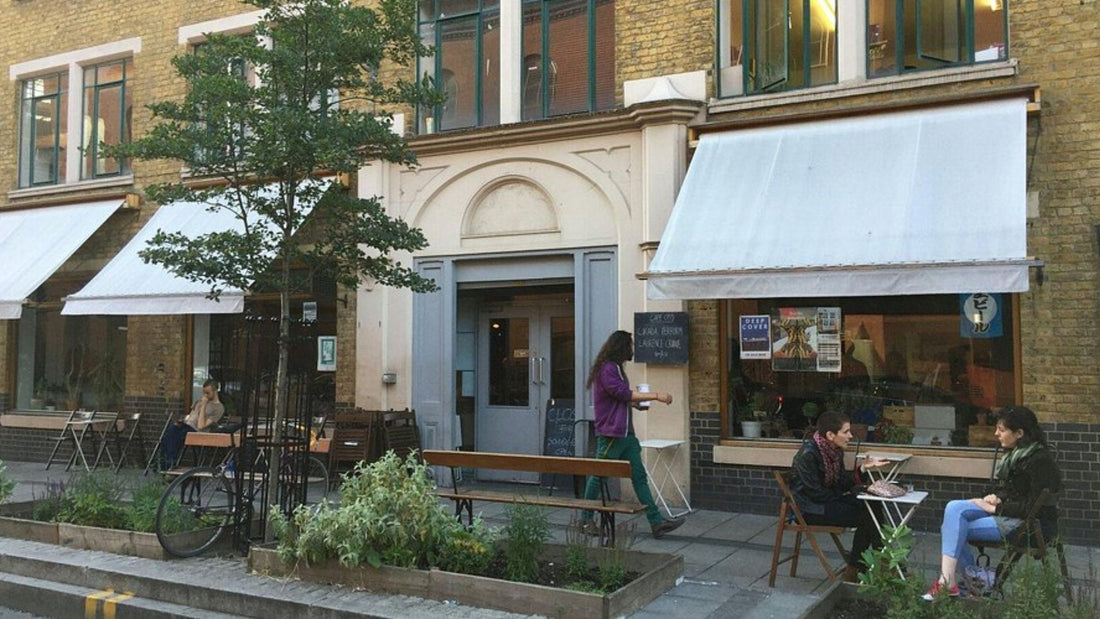
Where Sound Gets Brave – Inside Cafe OTO in Dalston
By Rafi Mercer
New Listing
18–22 Ashwin Street, Dalston, London E8 3DL, United Kingdom.
It’s evening in Dalston, and nothing announces newness like a former paint factory quietly humming with electric possibility. You walk up to 18–22 Ashwin Street under a wide window that parts night and sound. Inside, chairs are arranged in a horseshoe rather than a row—that’s your first signal: this isn’t performance as spectacle, this is music meeting eye-to-eye.
Cafe OTO opened in 2008, founded by Hamish Dunbar and Keiko Yamamoto, initially as a café with occasional shows. Now it is one of the most celebrated venues for free jazz, improvisational, experimental, noise, folk, electronica—even algorave and Tuareg psych-noise—in London and beyond.
The venue’s sound system is tuned to the room’s scale. No green room, no stage—just musicians, a few chairs, and a wall that carries sound like memory. The room’s intimacy is unmatched. You can hear the subtlest vibration of a bowed string, the breath of a horn, the friction of cello at rest. Sound isn’t projected—it’s invited to join you in the room.
A big part of the magic is the label OTOROKU, launched in 2012. This in-house label records performances live—artists like Roscoe Mitchell, Peter Brötzmann, Evan Parker, Thurston Moore, and countless boundary-breaking players get captured here, and those recordings become part of a line of releases that sustain the venue’s creative economy. They're not just concerts—they’re archival touchstones, given life in the moment and then carried beyond the walls on vinyl, tape, and clicks.
In 2018, Sonic Youth’s Thurston Moore called Oto a “clubhouse” for music on the margins. More recently, composer Daniel Blumberg dropped a lines of gratitude to “his friends at Cafe OTO” in his Oscar acceptance speech. That forced spotlight felt fitting—Oto is a hub for relationships, careers, and creative fractures that might vanish without it.
Yet, its survival isn’t taken for granted. Nestled in rapidly gentrifying Dalston, Oto has had to introduce membership models, rely on volunteers, and lean on its audience’s belief that art is worth sustaining—not just consuming.
The programming is staggering in its trust. Artists do residencies—Sun Ra Arkestra played five nights in a row. Evan Parker and David Toop might host listening sessions followed by discussion. You’ve seen performers play using credit cards, DJ Scotch Egg make Game Boy noise, or mezzo improvisers use clip-on false nails as styli. Every night is a leap, every artist an invitation to listen again.
And the people who show up are both quiet and electrified. Academics reading Greene, music obsessives muttering setlists to themselves, young people held in the trance of that shared wager: asking, what will we hear tonight?
The membership programs and volunteer base are full of people who stayed and built it—because it was worth being built.
When you leave, that night hums through your ears. You walk back into the street and Dalston feels crookedly bright—like it knows it’s part of something else now. You’ve been in a place where listening isn’t ambient—it’s architecture.
Cafe OTO doesn’t just offer music. It offers you the certainty that sound can still be destabilizing, powerful, and alive—and that maybe that’s what the listening world needs.
Rafi Mercer writes about the spaces where music matters. For more stories from the Tracks & Tales, subscribe, or click here to read more.














